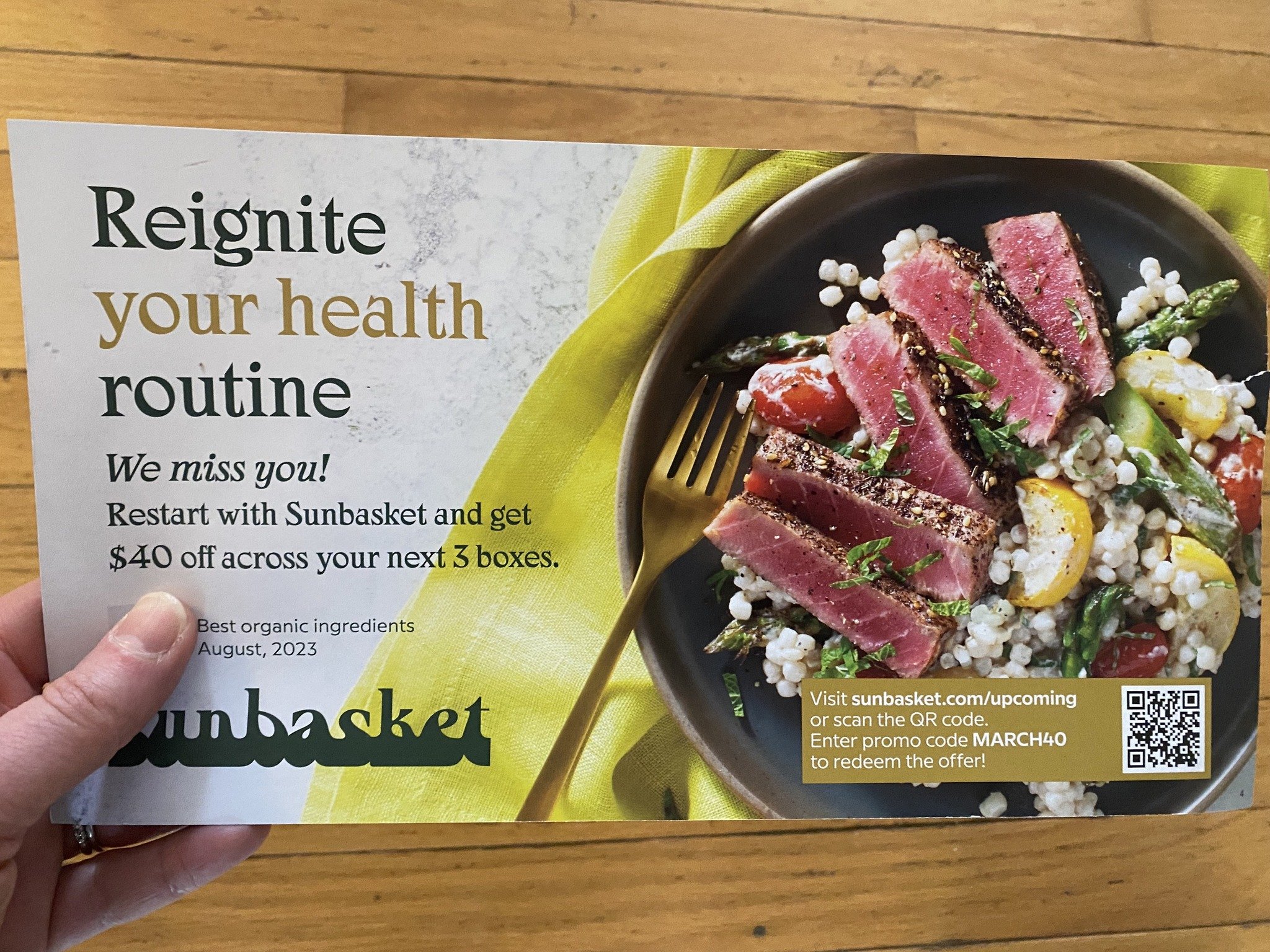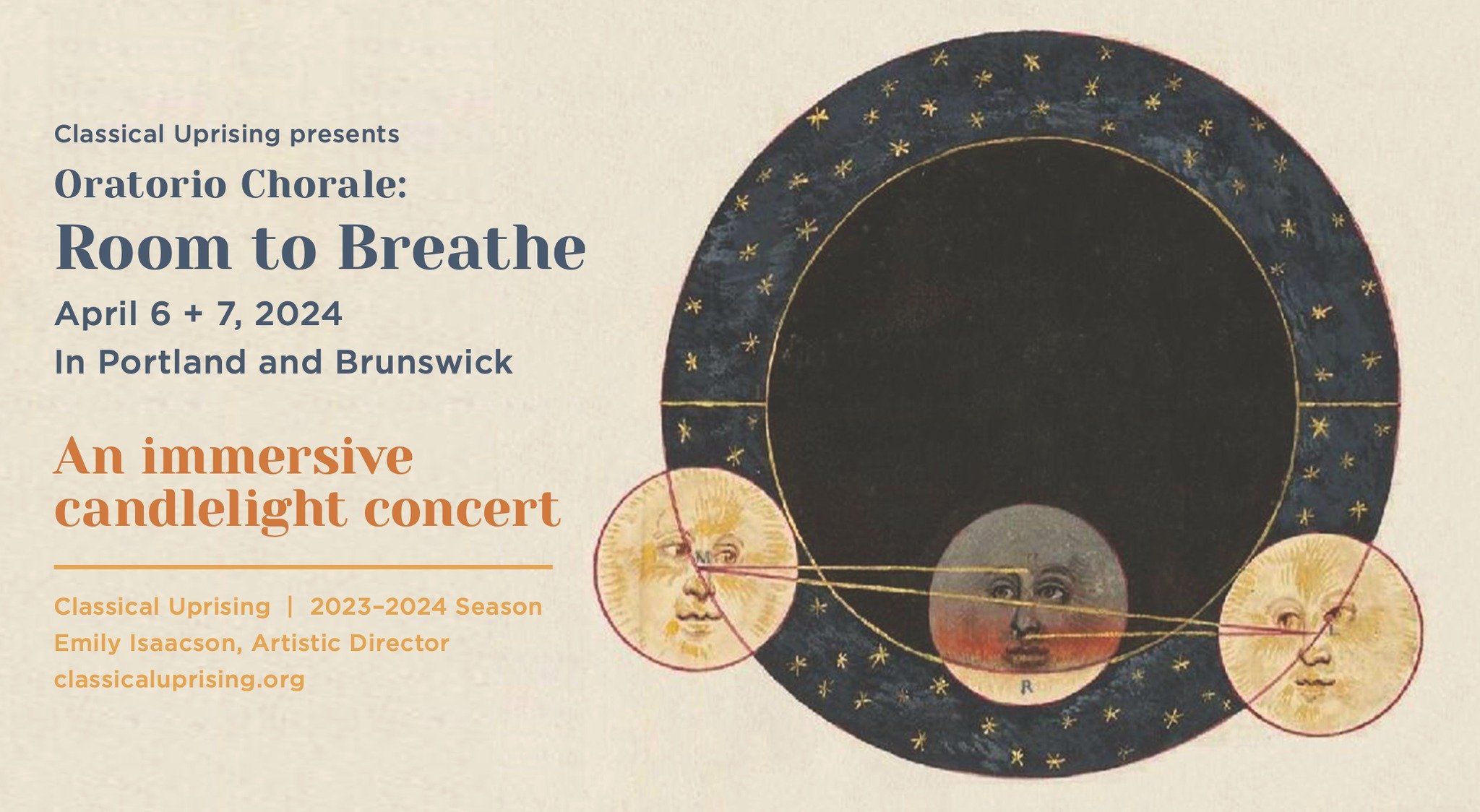Transform your arts marketing without spending a penny
Imagine you're marketing a meal delivery service. Your task? Win back lapsed customers with a direct mail flier.
You might start with the obvious: “Healthy organic meals! Delivered to your door. Ready in minutes. Chef-designed. Skip the grocery store.”
Here’s what actually landed in my mailbox this week from Sunbasket: “Reignite your health routine.” None of the product’s features made the headline. And that’s exactly the point.
Why didn’t Sunbasket lean into all of the great features that come with the product and service they provide?
Sunbasket knows that the most effective copy centers around a customer's desire for progress—not around the features of the product itself.
The features of their product, while they are indeed great, don't highlight the benefits or outcomes that are going to speak to today's consumer. They don't get at the deeper why behind a consumer's decision to sign up for their service. They’re not specific enough to the customer’s real life context, to be relevant to them.
This is such a great example of how the business world is leveraging principles of customer centric marketing in their pursuit of growth.
And in today’s digital world, where competition for consumer attention is fierce, arts organizations really need to pay attention to this.
Applying the customer lens to the arts
In the arts and culture sector reclaiming relevance and unlocking audience growth means crafting compelling narratives that resonate with your target audience's aspirations and motivations—not yours.
This flier from Sunbasket perfectly illustrates the difference between product-centric marketing—which has become completely ineffective in today’s world—and marketing that centers the customer.
So what does it look like for an arts and culture organization to be customer centric in their marketing? And why is a product-centric approach so bad?
In a product-centric approach, the focus is primarily on the features and attributes of the product or service. Marketing messages emphasize what the product is, what it does, and why it's superior to competitors.
The trouble with this approach is that it fails to connect with consumers on an emotional level and overlooks their underlying needs and desires—it overlooks their deeper why.
As Peter Drucker famously said, “People rarely buy what the company thinks it’s selling.”
Revlon founder Charles Revson echoed the same idea: “In the factory we make cosmetics. In the drugstore we sell hope.”
The lesson? Consumers don’t care about features. They care about progress—what your offering helps them become.
It’s not about your product. It’s about what it means in the customer’s real life.
What is your audience buying?
What might you discover if you applied this framework to your cultural organization? For what progress or transformation are your audiences “hiring” you and your art?
Spoiler: It’s probably not “to experience art.” Because real motivations always run deeper than the product itself.
The reality is, the value of your product is determined solely by your customer’s context. You may think what you are offering the world is priceless—but if it doesn't resonate with your customers' needs, or circumstances, or perceptions of value, it simply won't hold the same significance to them. It just won’t be relevant to them.
So understanding and adapting to your customer’s perspective is essential for successful marketing and long-term growth.
And here’s where it starts to get fun.
When you truly understand what your audiences are buying when they purchase a ticket—when you uncover the underlying motivations and their deeper why—you’ll walk away armed with insights so powerful that your marketing will write itself.
That’s the power of customer centricity.
Centering the customer in your marketing means organizing the information based on its importance and relevance to the target audience.
It's about prioritizing the most critical information first. And the most critical information to your potential patrons, the information that will resonate most, isn’t necessarily the name of the piece of art, or the artist, or the conductor—no matter how famous they are.
Consumers Have Questions
Rather than opening with the information that you as an Insider might find most critical, you need to first answer the question that is ever present in the mind of the customer: What’s in it for me?
Focus on the benefits of attending your event, the transformation the customer might experience when engaging with your art, or the impact on the community—rather than solely promoting the product itself.
By carefully considering the hierarchy of information in your marketing, you ensure that your messaging effectively communicates the value that resonates to the broadest audience, not just your Insiders.
Take a look at the marketing that your organization has produced this season. Are you primarily focusing on the features and attributes of your product or service, or are you considering the deeper needs of your target audience?
How do you do this? Put yourself in the shoes of these customers. What are their aspirations, motivations, and pain points? What struggles do they encounter in their daily lives? What progress or transformation are they seeking in their lives? And how can your event help them make that progress—and what’s the best way to communicate that?
Classical Uprising and the Solar Eclipse
Here’s a really tangible example for you. Classical Uprising here in Portland Maine has a concert coming up on the Saturday a few days before the solar eclipse. This concert will feature choral works by a slew of incredible contemporary composers. But in the hierarchy of their marketing messaging, this information comes last.
Here’s what they lead with in their recent Facebook post:
"Eclipses are seen as a time of personal transformation and collective renewal. I designed Room to Breathe as a secular ritual—an immersive sound bath, an artistic wellness ceremony, a musical meditation—for this moment, using music and evoking rituals to awaken the spirit and observe the inner self as a reflection of the cosmic universe." — Dr. Emily Isaacson, Artistic Director
Join us for Room to Breathe with Oratorio Chorale to tap into the eclipse's power to engage your sense of wonder, find balance, and get rid of that which is no longer serving you.
Talk about being relevant to today’s consumer!
Remember, the key to successful marketing lies in empathy. This kind of work pays dividends—and it’s absolutely free.
By centering your efforts around your audience and their needs, you'll be better positioned to create meaningful connections; to resonate with a broader audience; and to drive more long-term engagement.
It’s a pivot that’s accessible to any arts organization of any budget size.



